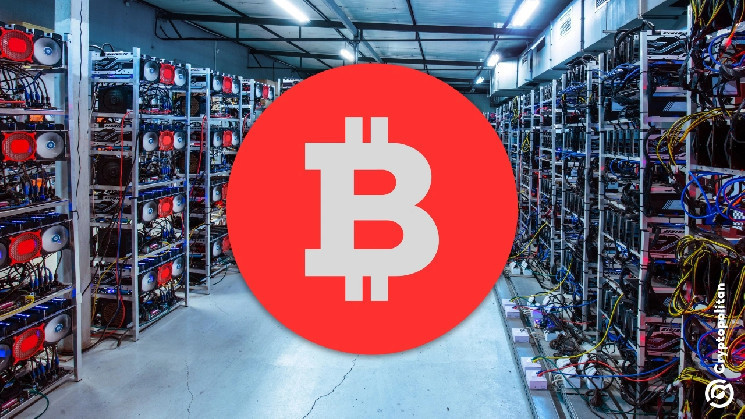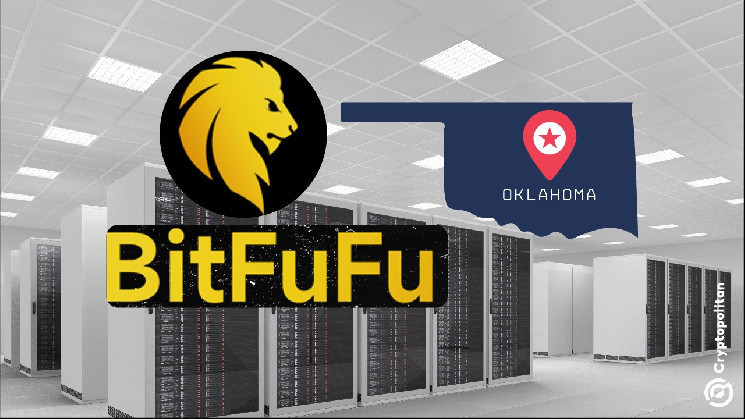US Bitcoin miners stockpile BTC as resource battles heat up

Bitcoin miners across the United States are reportedly hoarding the apex crypto in what looks like an all-out arms race to survive rising costs and tougher competition. Giants like Mara Holdings, Riot Platforms, and CleanSpark are leading the charge, raising $3.7 billion since November.
The timing is no coincidence. Bitcoin hit an all-time high of $100,000 last month, giving miners a golden chance to convert hype into hard cash. With Donald Trump now officially back in the White House, promising that BTC will be “mined, minted, and made in the USA,” the stakes have never been higher.
High costs amid slashed rewards
Last year’s halving cut mining rewards from 900 coins a day to just 450. This is built into Bitcoin’s code to make the asset scarcer and, theoretically, more valuable. But for miners, it’s like being asked to do twice the work for half the pay.
CoinShares, the investment company, dropped some hard truths in their recent data. The average cost to produce one Bitcoin for US-listed miners jumped 13% last quarter to $55,950. But that’s just the base cost. Throw in depreciation and stock-based compensation, and you’re looking at $106,000 per coin.
Here’s the thing: Bitcoin is currently trading around $102,000. “If the price didn’t rise, then we would have started to see quite a few start to turn rigs off or go bust,” said James Butterfill, head of research at CoinShares.
So why aren’t they folding? Because they’ve got a secret weapon: the soaring hash price. This key metric for mining profitability has jumped 32% since Trump’s election win, giving miners just enough breathing room to keep their rigs humming.
Trump’s Bitcoin boost
Trump’s victory has electrified the crypto market, especially in the mining sector. His commitment to making BTC a fully American enterprise is giving miners a reason to double down on their investments.
Mara Holdings CEO Fred Thiel said the company’s entire business model is now about “accumulating as much BTC as [we] can.” Right now, the company holds nearly 45,000 Bitcoin, worth over $4.4 billion.
Riot Platforms and others are also following a new playbook, taking inspiration from MicroStrategy’s strategy of issuing long-term convertible bonds to buy BTC. These miners are flipping their treasuries into Bitcoin reserves, keeping every new coin they mine.
But while Trump’s pro-Bitcoin stance has miners cheering, it hasn’t solved their biggest problem: energy. Mining operations eat up massive amounts of power. The US Energy Information Agency estimates that BTC mining already uses 2.3% of the country’s electricity grid.
And in Texas, the top state for mining, regulators are stepping in. Any data center using over 75 megawatts of power annually must now provide detailed energy usage reports. That’s no small feat in a state where energy demand from large users is expected to jump 60% by 2025.
AI vs. Bitcoin miners: The new battleground
Miners aren’t just competing with each other anymore. They’re up against artificial intelligence developers, and these tech giants are bringing bigger budgets and even more aggressive strategies.
AI and Bitcoin mining both rely on high-powered GPUs, and right now, AI is winning the battle for resources. Analysts predict that much of Bitcoin’s computational power could move overseas in the coming years. It’s basic economics: is the grid’s best use as a BTC mining facility or as an AI data center?
Realistically speaking, AI is looking like the smarter bet. Faced with this uphill battle, some miners are going global. Mara is planning to move half its operations offshore by 2028, targeting countries with surplus energy like Kenya, the UAE, and Paraguay. These regions offer cheaper power and fewer regulations, making them ideal for miners looking to stay competitive.
Other companies are taking a different approach, pivoting into AI themselves. Hut 8, Core Scientific, and Hive are leasing their data centers to AI hyperscalers, turning what used to be mining hubs into profitable AI facilities. It’s a risky move, but one that could pay off big if the AI boom continues.
Even with Bitcoin trading at $100,000, miners are feeling the heat. The collective hash rate—essentially the total computing power securing the Bitcoin network—hit an all-time high last Friday. That’s great for network security, but terrible for miners, as it means even more competition.
A Step-By-Step System To Launching Your Web3 Career and Landing High-Paying Crypto Jobs in 90 Days.
Source: cryptonews.net



